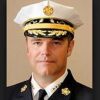Editor’s Note: Chief Adam K. Thiel discusses how higher education is key to fire service leaders’ career paths.
In the interest of full disclosure, I’ve been deeply involved with the National Fire Academy’s Fire and Emergency Services Higher Education program for about 10 years; first as Virginia’s state fire director and then as a deputy/fire chief.
The real opportunity presented by FESHE, and demonstrated by these colleges’ achievements, is the potential for helping firefighters, fire prevention personnel, and EMS providers streamline their professional development journeys regardless of job changes and moves across states, regions, and the nation.
Like many fire chiefs today, my own career path took a series of twists and turns as I acquired the training, education, experiences, and self-development that led me to my current position. There was no set pathway or roadmap, and while I had a plan, it changed several times when doors opened or closed along the way.
The FESHE National Professional Development Model and Matrix offer fire departments, state training agencies, educational institutions, and even individual firefighters with a great starting point for identifying “what it takes” to become a fire chief, fire marshal, or EMS chief by integrating the various dimensions of professional development in a coherent way.
Hopefully there’s no more debate about whether or not higher education is important for the fire and emergency services. It’s the 21st century folks; we have to work smarter, and harder, to help our departments meet the economic challenges of today, and the uncertainties of tomorrow.
Stay safe!


